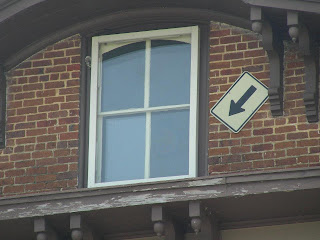Robert Louis Stevenson, author of
Treasure Island, once said, “For my part, I travel not to go
anywhere, but to go. I travel for travel's sake. The great affair
is to move.” I plan to move this summer. Maybe not far, but move
nonetheless. I don't know where my travels will take me this summer
or what unplanned adventures will arise during these travels. I hope
to learn more about the history of Alabama and the surrounding states
and use these experiences with my students in the fall. And so I
move...
My first trip took me to
Carrollton, Alabama. Carrollton is located in Pickens County, a
county that borders Tuscaloosa County. It takes about 45 minutes to
take the 34 mile trip to Carrollton from Tuscaloosa. My main reason
for going to Carrollton was to take a picture of it's famous
Courthouse.
As you approach the Courthouse
from the front it's architectural design is like many buildings of
the post Civil War era. The original Courthouse was burned down in
1864 by Union soldiers under the command of General John T. Croxton.
(This is the same Union General who's soldiers burned down The
University of Alabama.) Like most towns around the South when the
war ended it took time to rebuild. Lot's of hard work and hard to
come by money were spent to rebuild the Courthouse. The town was
proud of it's new Courthouse and was a symbol of the resilience of
the people in the area. If the story ended here the history of the
Civil War and the war monuments located in front of the Courthouse
are reasons enough to take a detour to visit the small town's
Courthouse. *If you enjoy history. But the story does not end here.
This is where history and legend
sort of mix together the way Tobasco mixes with gumbo. In 1876 the
Pickens County Courthouse was burned down again. A freed slave by
the name of Henry Wells was accused and convicted of burning the
Courthouse in 1878. Henry was placed in a holding room at the top of
the Courthouse. Legend says that Henry Wells proclaimed his
innocence and threatened to haunt them for the rest of their lives if
his punishment was carried out. Protests from freed slaves were not
held in high regard in the Reconstruction Era South. So his threats
were not taken seriously.
As a lynch mob gathered below, and
a thunderstorm formed above, Henry Wells was looking out of the
Courthouse window at the angry mob. As the mob grew so did the
storm. A bolt of lightening struck a nearby tree and shot across to
the window where Henry Wells was watching the mob. Henry Wells died
of gunshot wombs to the chest in his attempt to flee the Courthouse.
The face of Henry Wells however was permanently seared into the
Courthouse window by the lightening. The image of Henry Wells can
still be seen to this day peering down from atop the Pickens County
Courthouse.
If you are interested you can read
more about the Pickens County Courthouse in Kathryn Tucker Windham's
book, “13 Alabama Ghost and Jeffery”.




